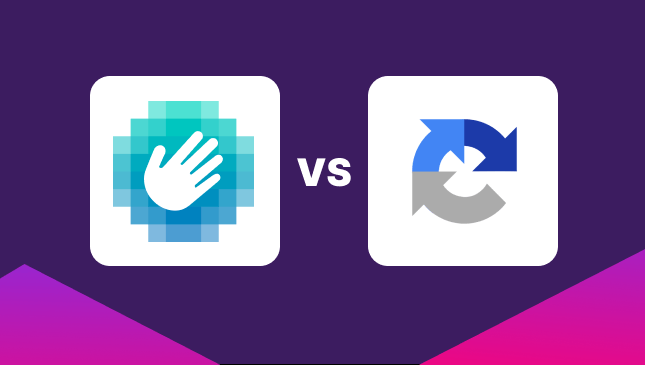Why Are You Getting Clicks From The Wrong Geos?
Sanja Trajcheva
|Marketing | July 27, 2020

Every day it seems at least one of our clients asks, “Why are my ads shown in areas I haven’t geo-targeted” or “Why am I receiving clicks outside of my geo-targeted area?”.
Unfortunately, the answer is not so simple.
Let’s say you have a local sandwich shop in Chicago, so your geo-targeted area in Adwords is in Chicago, but when you look at your IP list in Adwords, there are clicks from all over the country… from Buffalo to Sacramento, and sometimes even Bangladesh.
Supposedly, Google does not show your ads to areas that are not being geo-targeted, but like everything in life, there are always exceptions…
Let’s dig deeper into what could be causing this issue and what exactly can be done to stop it.
IP Address and User’s Locations Do Not Match
This is arguably the most noticeable discrepancy in geo-targeting that can cause some confusion.
IPs, aka Internet Protocol addresses, are designated by the ISP, aka Internet Service Providers, to determine the user’s said location. This is how Google decides where to show their ads, based on the location of the IPs and ISPs.
Google themselves have admitted that IP locations may not be the same as the user’s actual location.
If this issue continues, Google recommends putting the targeted city in the ad itself to avoid any confusion, but according to our clients, this solution doesn’t work!
Search Engine Land conducted an experiment to test just that. The test consisted of users logging into Google Analytics’ Real-Time reporting tool to monitor the activity. Although the sample size was relatively small, just shy of 150, the results were still intriguing.
There are two errors that occur within Google, the false positive, which is when it appears you are in Chicago when you aren’t actually, and the false negative, when you may actually be in Chicago, but according to the search engine, you are not.
The blog post states, “In our study, only 55 percent of users were correctly located with zero error. Even if we allow for location error of 25 miles (a reasonable radius for most local businesses and Google Adwords Express), this number rises to only 67 percent.”
It doesn’t take a rocket scientist to realize these numbers are pitiful. There are only about ½ to ⅓ even incorporating the error in the location that is actually accurate. This number should be as close to 100 percent as possible.
Clearly, there is a serious issue here…
The Mobile Problem
The results of the experiment showed that mobile devices, not connected to wifi but connected to their service provider, were much less accurate in terms of location than their computer relatives.
In some cases, Google reported them over two thousand miles away from their actual location.
In certain instances, the device and actual location were in different countries completely.
Location Specific Searches
Let’s say you live in Memphis, but you’re planning a trip to Chicago, and you want to go to the best local sandwich shop in town. So, you may search for something like “best sandwich shop in Chicago” or “local sandwich shops in Chicago.”
In this case, you’re conducting a search in a location that is not where you are currently located, which justifies the discrepancy in the IP address.
Although, the same can be said on a national, countrywide level. You can target specific countries to help alleviate some of these discrepancies or target your campaigns regionally or customize them (drop down from the regional level).
Not sure how to customize your location targeting?
- Log into your Adwords account
- Click the specific campaign you would like to manage (or multiple)
- Go to Settings, then Locations, to manage them
- Here you can customize however you’d like
- Remove, add, check out nearby locations, and more
According to Google, “Note that if you only target customers physically located in your target area, any location terms in your keywords must also be within the targeted area. If the terms fall outside your targeted area, your ad won’t show on that keyword.”
Exclude Exclude Exclude
If you’re receiving an odd number of clicks from Bangladesh as a local sandwich shop in Chicago, then exclusions may be your answer.
But before you go exclusion crazy, take a second to think and make sure you are not alienating potential customers.
Not sure how to set up exclusions in Adwords? Check out our DIY fraud protection guide for simple and easy step-by-step instructions.
Test It For Yourself
First, increase your target radius by 20-25%, and make sure those from the surrounding cities will be exposed to the ads as well.
- Log into your Adwords account
- Select the specific campaign(s)
- Go to Settings, then Location
- Click the location itself, then Radius Targeting
Then analyze the data for at least a couple of weeks to see if the conversions have increased in the given area. An increase indicates a geo-targeting error has occurred.
At CHEQ, we have conversion tracking to give an inside look at each and every click. See where users are clicking and from which device.
Subsequently, you should change the targeting radius accordingly to prevent getting more useless clicks.
Final Thoughts
Hopefully, this article has given you some insight into why you’re seeing IPs outside of your geo-targeted areas in Adwords clicking on your ads.
The correlation between click fraud and unwanted geographic clicks is far too strong. Geography plays a huge role in click fraud, whether it be excluding IPs of click farms or your competitor’s IP. The targeted locations of your ads and clicks are now more important than ever.











